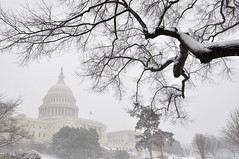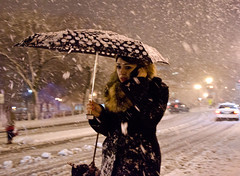
”
courtesy of ‘Chris Rief aka Spodie Odie’
(Hopefully you read that title to the theme song of the popular 80’s cartoon)
UPDATE: NWS just issued a Winter Storm Warning with up to 20″ of snowfall.
Unless you’ve been hiding for a few days, you know that our beloved city is in for a real winter storm this weekend. And by that I mean REAL. A once every three years or so kind of thing for DC with predictions of over a full foot of snow even inside the beltway. But what makes this storm even more unusual than simply the amount of snow that could fall is the fact that we could experience the meteorlogical phenomenon that is thundersnow. DUN DUN DUN. A thunderstorm with snow? What? Crazy talk? Luckily, we have Logan Johnson, a Senior Meteorologist with the National Weather Service, here to save the day.
“Thundersnow is a rare weather phenomenon, which is basically a thunderstorm that forms in weather that is cold enough for the precipitation to fall in the form of snow instead of rain. Thundersnow is rare because normally thunderstorms need warm and moist air to form. Cold and drier air, like what occurs during the wintertime, is not very conducive to the development of thunderstorms. The two things that are necessary for thundersnow are the presence of unstable air and a force that will push this unstable air upwards. This force of rising air is provided by strong low pressure. The low pressure will push the unstable air upwards, allow for clouds and thunderstorms to form, and provided that the atmosphere is cold enough, it is thundersnow,” writes Logan. His full detailed and exclusive forecast just for WeLoveDC, including a complete explanation, is after the jump.
Continue reading →

